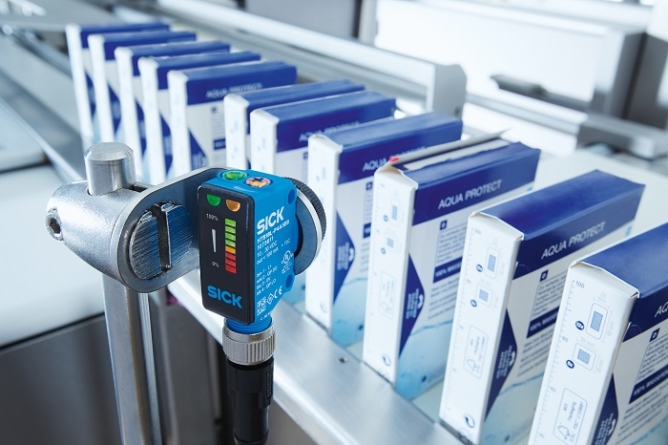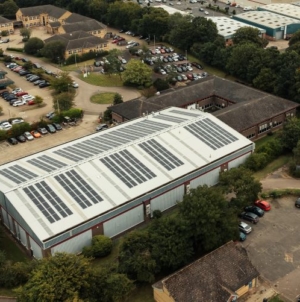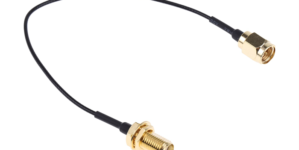-
Nutrivend selects Forterro’s Orderwise to support online expansion and streamline operations - April 11, 2025
-
ARROWXL LAUNCHES AMBITIOUS ZERO WASTE ROADMAP - April 8, 2025
-
THE BCMPA’S NEW CAMPAIGN DRIVES OUTSOURCING SUCCESS IN Q1 - April 7, 2025
-
BLACKOUT TECHNOLOGIES TARGETS TELEMATICS-INTEGRATED MOBILE DEVICE BLOCKING TO COMBAT SMARTPHONE DISTRACTION - April 1, 2025
-
Sparck Technologies awarded Royal designation - March 27, 2025
-
OpenADR Alliance announces first OpenADR 3.0 certified products with EVoke Systems, E.ON Energy and Universal Devices - March 25, 2025
-
Growing fulfilment and contract packer appoints new Managing Director - March 25, 2025
-
When is it time to invest in a WMS? Understanding the key trigger points - March 25, 2025
-
eCapital helps Vantage Recruitment on its journey to financial success - March 24, 2025
-
Hugo Beck Celebrates 70 Years of Packaging Innovation with Open House Events - March 20, 2025
Introducing SICK’s SureSense – the Flexible Family of Customisable Sensors.
SICK has developed the SureSense family of user-customisable photo-electric sensors – a concept that enables machine builders and plant engineers to specify from a wide-range of sensing options all within a standard technology, set-up, mounting and housing.
The durable SureSense sensors can reliably detect nearly any object in any environment in warehousing and logistics applications – ensuring machines and lines stay up and running at full capacity.
David Hannaby, SICK’s UK product manager for presence detection, explains why SICK developed the technology. “We are seeing more companies looking to use a hybrid sensor that allows flexibility in mounting either from the side or from the front. During installation and operation, SureSense’s signal strength bar gives a clear indication of the sensor’s performance, making set up and operation easier for engineers.
“The SICK SureSense enables machine builders and plant engineers to standardise on one single sensor family for the most basic to advanced applications. Users can build their own sensors online, expect prompt delivery and quickly commission their sensors for optimal performance.
“As a result, machine design variables, plant maintenance costs and stores inventories can be all be dramatically streamlined.”
Intelligent Sensing Technologies
SICK SureSense offers either laser light, red or infra-red LED in the same housing, multiplying the number of potential applications from one sensor family.
SICK SureSense also incorporates a facility, not seen on conventional sensors, that helps users achieve rapid set-up and ongoing high performance. A signal strength light bar on the back of the sensor housing enables the alignment to be optimised, increasing performance consistency and stability, even when faced with mechanical stress or contamination.
SICK SureSense sensors draw on a comprehensive toolbox of innovative SICK technologies to compensate for the wide variety of shapes, colours and tones, transparency or reflectivity of objects to be detected. Excellent background suppression means the effects of changes in colour or materials, or by reflections from the surrounding production environment are minimised. In applications to detect clear objects such as bottles or food trays, the sensors automatically compensate for dust and dirt contamination using Sick’s renowned Auto-Adapt technology.
Challenging Products and Conditions
David Hannaby continues: “The SICK SureSense family benefits from all the SICK technologies you would expect to simply detect any object. For example, built-in sensor intelligence compensates for the high light absorption by dark or matt black objects, by adjusting and optimising the emitted light intensity and signal strength.
“SICK SureSense is also available with a laser LED emitter that enables superior performance in applications such as counting small objects, detecting small holes, sensing objects through small openings and detecting product defects.”
SICK SureSense’s tough VISTAL housing and IP69K/Ecolab rating ensure rugged durability and resistance to vibration, chemicals and moisture for a long reliable life. The -40oC to +70oC range means the sensors can be used reliably without risk of failure in a wide variety of temperatures.
































